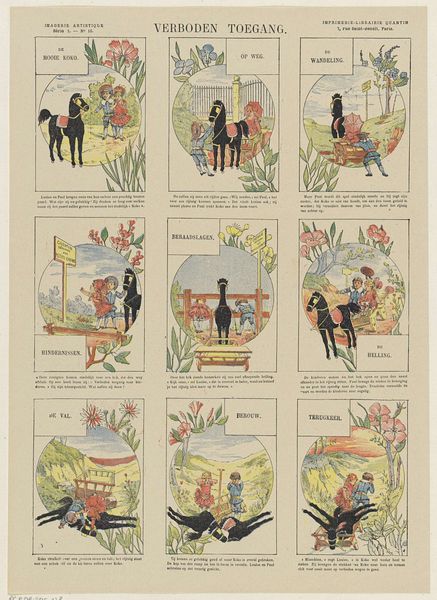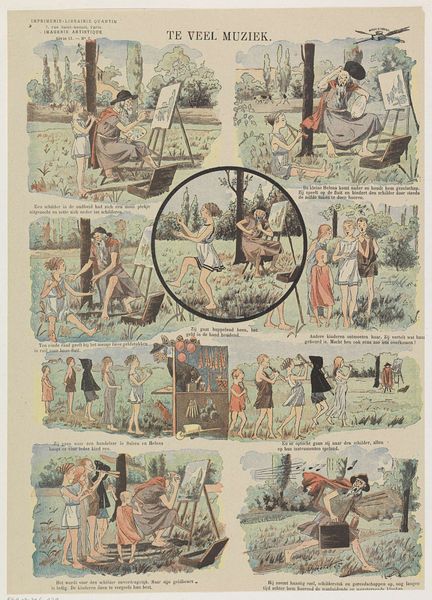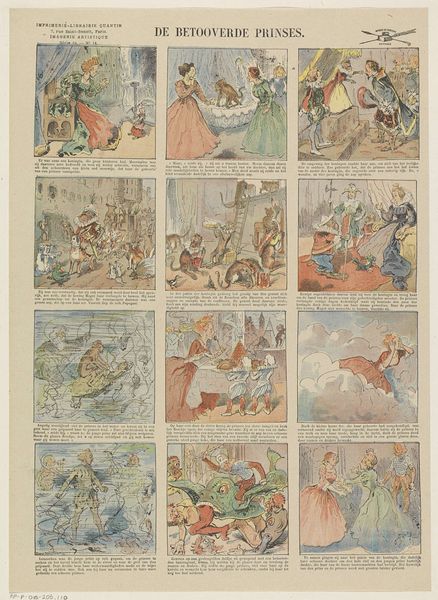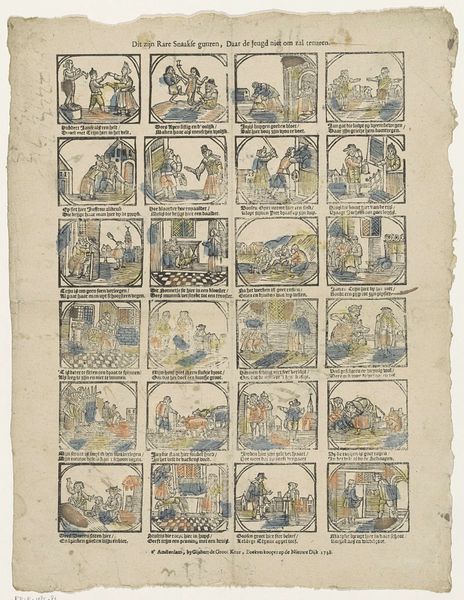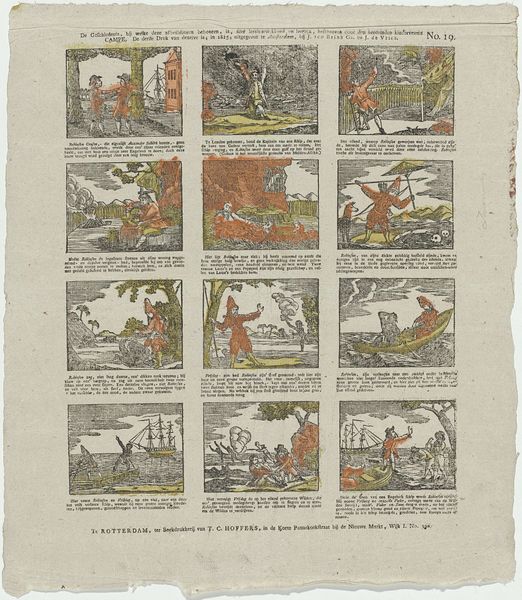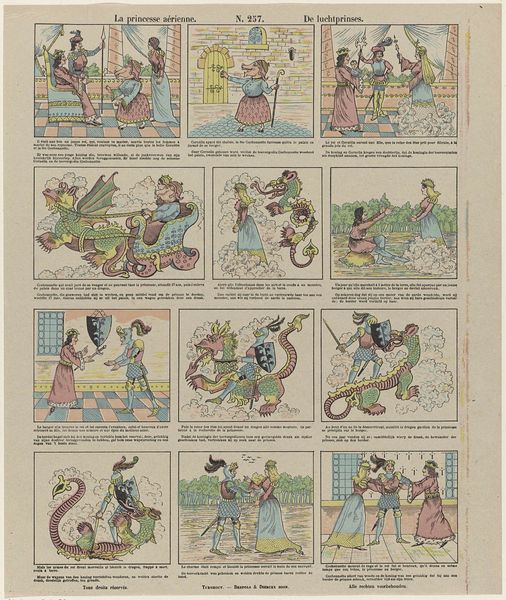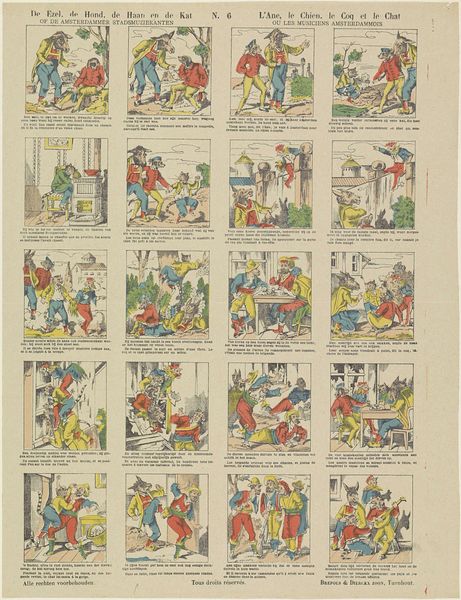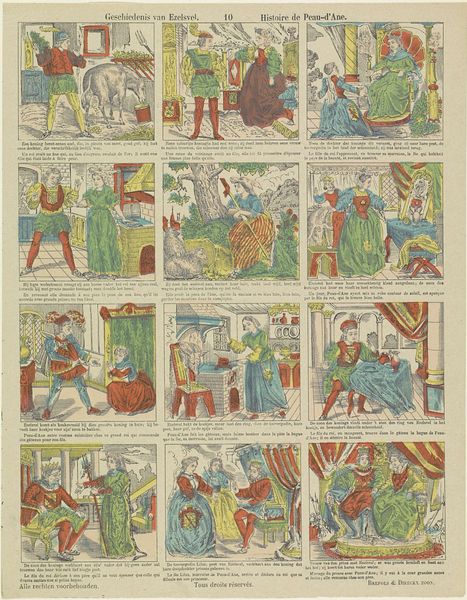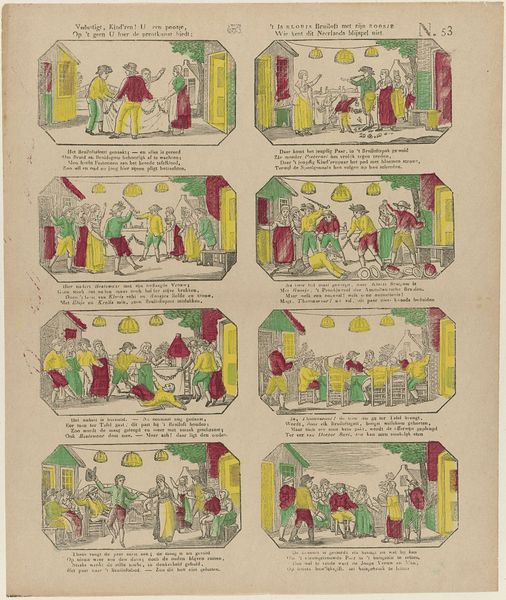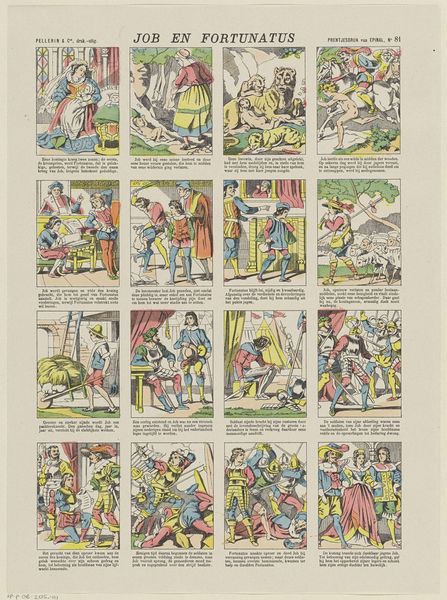
print, etching
#
comic strip
# print
#
etching
#
comic
#
symbolism
#
genre-painting
Dimensions: height 369 mm, width 264 mm
Copyright: Rijks Museum: Open Domain
Editor: This is “Mededingers,” believed to be created between 1876 and 1890 by A. Bogino. It's a print using etching techniques, and at first glance, it strikes me as an early form of comic strip, maybe even a satire on childhood rivalries. Each panel is like a little window into a melodramatic squabble. What stands out to you when you look at it? Curator: Oh, it whispers tales of playground politics, doesn't it? What jumps out at me is the visual rhythm, each vignette framed like a memory, a stage play frozen in time. Bogino is playing with the visual language of morality tales, I think, where each panel is a chapter in a child's fall from grace – or perhaps, their clumsy climb toward social understanding. The use of color, or lack thereof, creates a faded nostalgia, like looking at a washed-out photograph album. I wonder, does the Dutch text under each image reveal deeper clues about these young rivals and their social ecosystem? Editor: The captions are definitely key. The last panel shows them reconciled! Is the limited palette part of the symbolism, maybe emphasizing a loss of innocence or something more? Curator: Could be, or it might just be a practical choice reflecting the printing technology of the time! The pastel wash feels rather intentional and does suggest a sentimental yearning, like looking back at childhood through rose-tinted glasses, even if that childhood involved the cutthroat competition for attention! These seemingly naive little stories reveal universal truths about relationships and social hierarchies, right? It really speaks to the lasting nature of the "human comedy," if you will. Editor: That’s interesting—how the work looks so childish, but reflects on these complex themes! I never considered printmaking as a storytelling device quite this way! Curator: Exactly! "Mededingers" invites us to laugh, reflect, and perhaps even cringe a little at the enduring dynamics of human interaction. It also gives us pause to consider a different form of creative language.
Comments
No comments
Be the first to comment and join the conversation on the ultimate creative platform.
